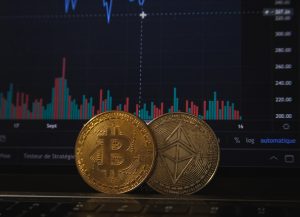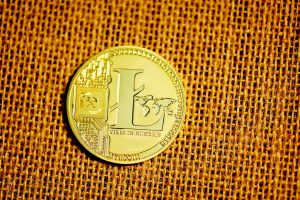Forex, short for foreign exchange, is the world’s largest financial market, with trillions of dollars traded daily. The forex market allows individuals, institutions, and governments to buy and sell currencies with the goal of making a profit. One of the most widely traded currency pairs in the forex market is the EUR/USD.
The EUR/USD is a currency pair that represents the exchange rate between the euro and the US dollar. In other words, it shows how many US dollars are needed to buy one euro. The EUR/USD is the most actively traded currency pair in the forex market, accounting for over 30% of all forex trades.
The euro is the currency of the European Union and is used by 19 of the 27 member states. The euro was introduced in 1999, and since then, it has become one of the world’s most traded currencies. The US dollar, on the other hand, is the currency of the United States and is the world’s most dominant reserve currency. It is also the most traded currency in the forex market.
The EUR/USD exchange rate is determined by the supply and demand for these two currencies in the forex market. When there is more demand for euros than US dollars, the value of the euro increases relative to the US dollar, and vice versa. This exchange rate is constantly fluctuating and can be affected by a variety of factors, including economic data releases, central bank policies, geopolitical events, and market sentiment.
Economic data releases, such as GDP, inflation, and employment data, can have a significant impact on the EUR/USD exchange rate. Positive economic data from the eurozone, such as a strong GDP growth rate, can increase demand for euros, causing the euro to appreciate against the US dollar. Similarly, negative economic data from the US, such as a weak employment report, can lead to a decrease in demand for US dollars, causing the US dollar to depreciate against the euro.
Central bank policies can also have a significant impact on the EUR/USD exchange rate. The European Central Bank (ECB) and the US Federal Reserve (Fed) are responsible for setting monetary policy in their respective regions. When the ECB or Fed announces changes to their monetary policy, such as interest rate cuts or increases, this can affect the demand for the euro and the US dollar.
Geopolitical events, such as elections, trade negotiations, and international conflicts, can also impact the EUR/USD exchange rate. For example, if the outcome of an election in the eurozone is seen as positive for the euro, this can increase demand for euros, causing the euro to appreciate against the US dollar. Similarly, if there is a breakdown in trade negotiations between the US and the eurozone, this can lead to a decrease in demand for euros, causing the euro to depreciate against the US dollar.
Market sentiment, or the overall mood of forex traders, can also affect the EUR/USD exchange rate. If traders are optimistic about the eurozone’s economic prospects, this can increase demand for euros, causing the euro to appreciate against the US dollar. Conversely, if traders are pessimistic about the eurozone’s economic prospects, this can lead to a decrease in demand for euros, causing the euro to depreciate against the US dollar.
In conclusion, the EUR/USD is a currency pair that represents the exchange rate between the euro and the US dollar. It is the most actively traded currency pair in the forex market and is influenced by a variety of factors, including economic data releases, central bank policies, geopolitical events, and market sentiment. Understanding the factors that affect the EUR/USD exchange rate is crucial for forex traders who want to make informed trading decisions.





